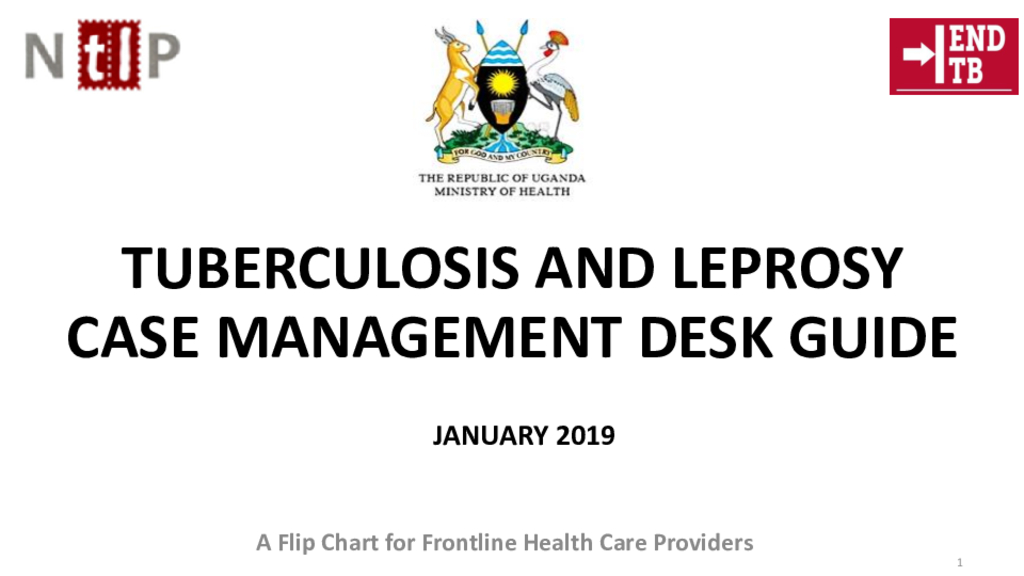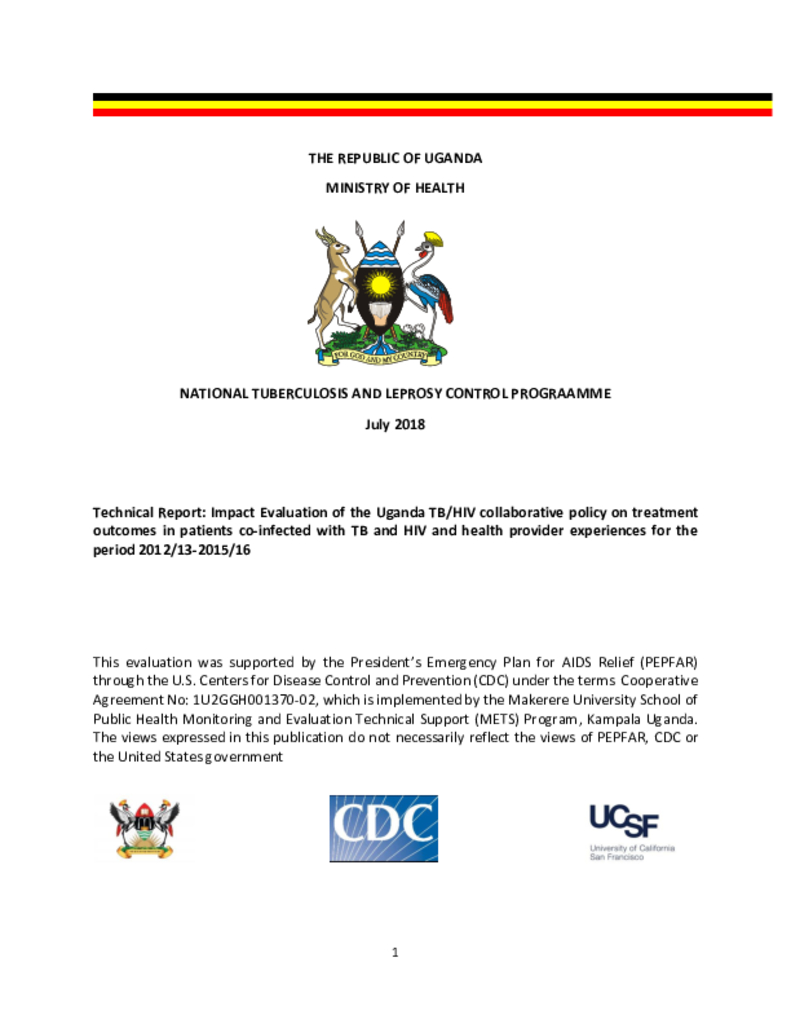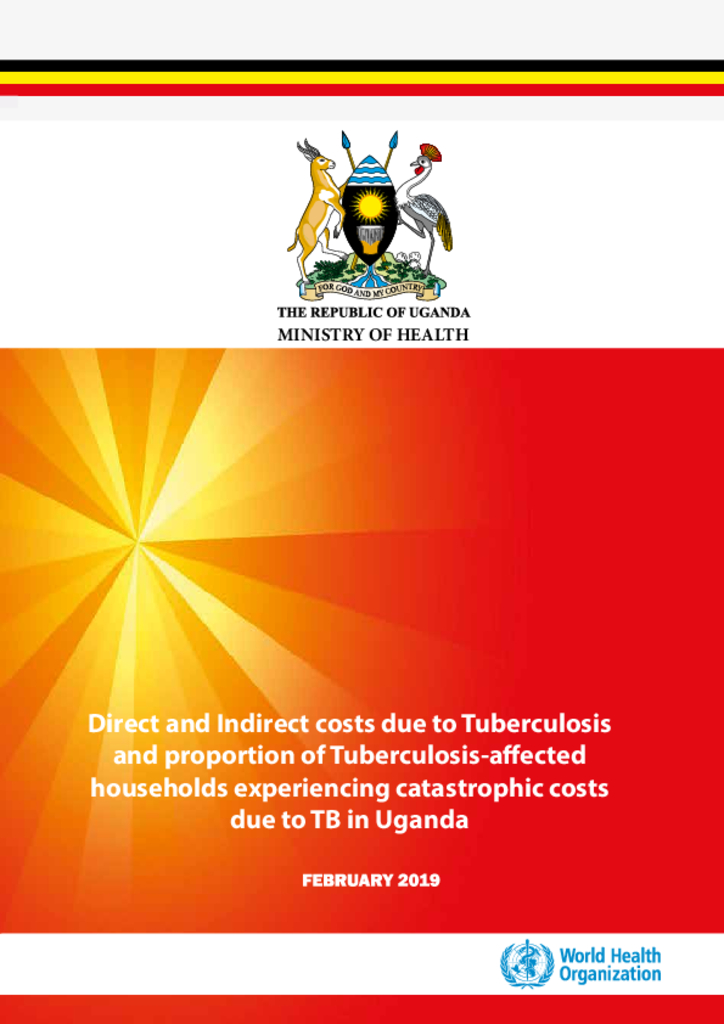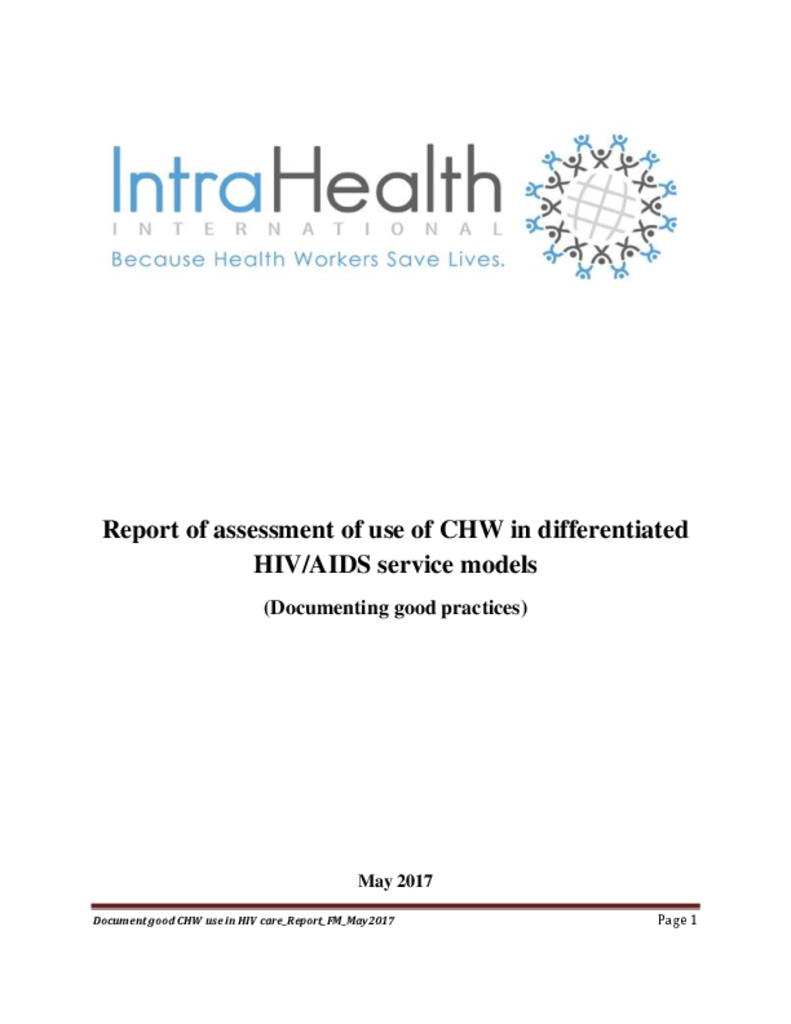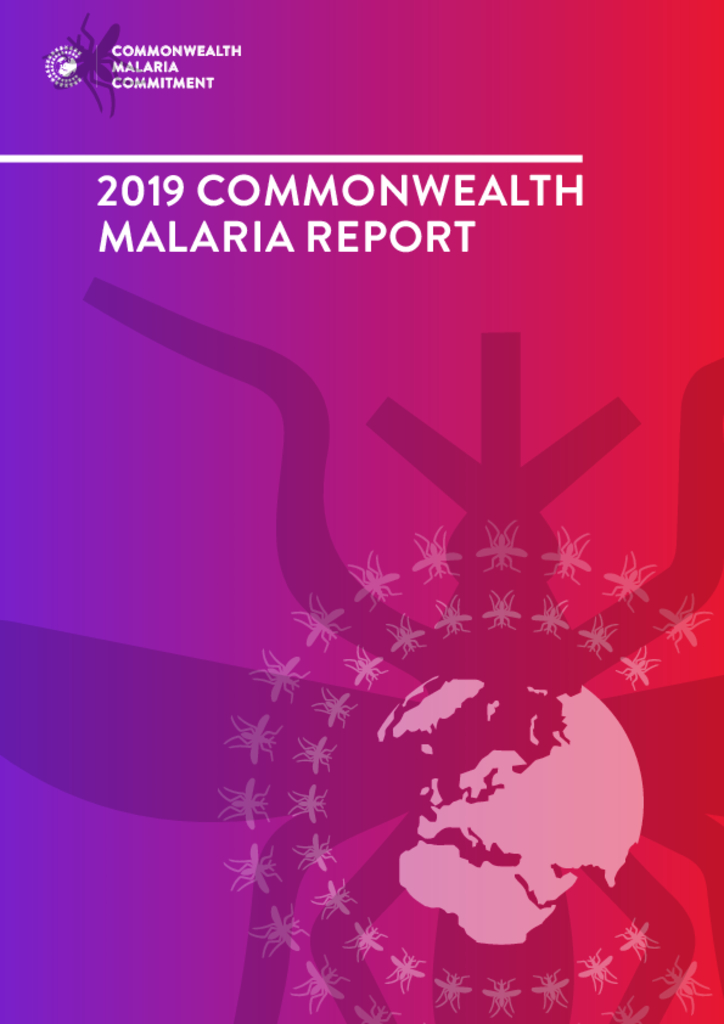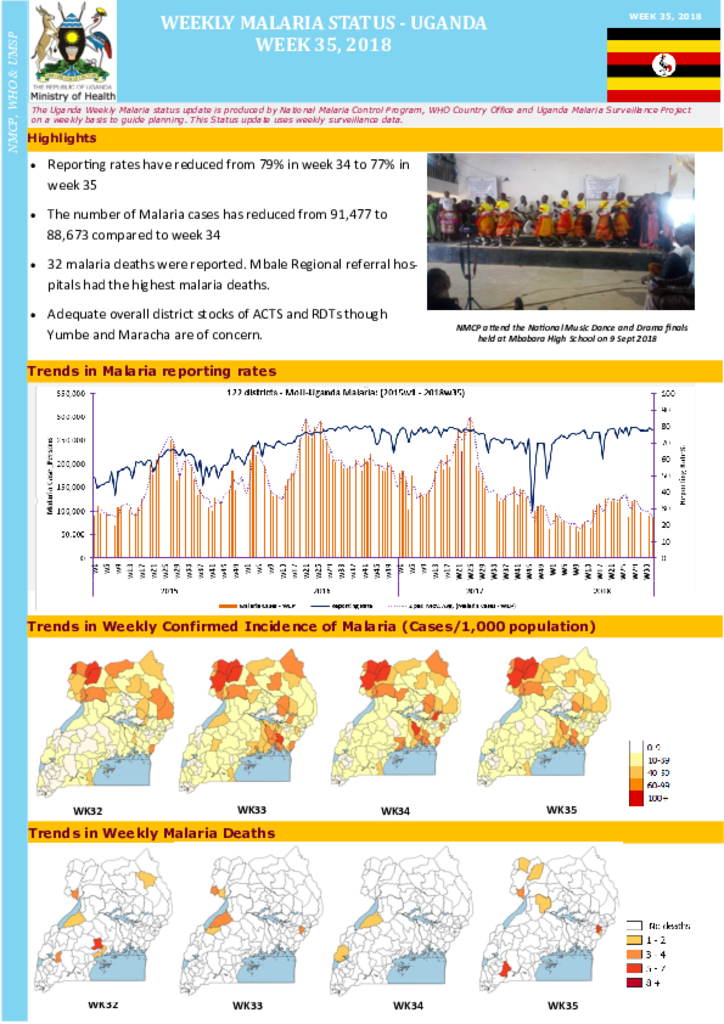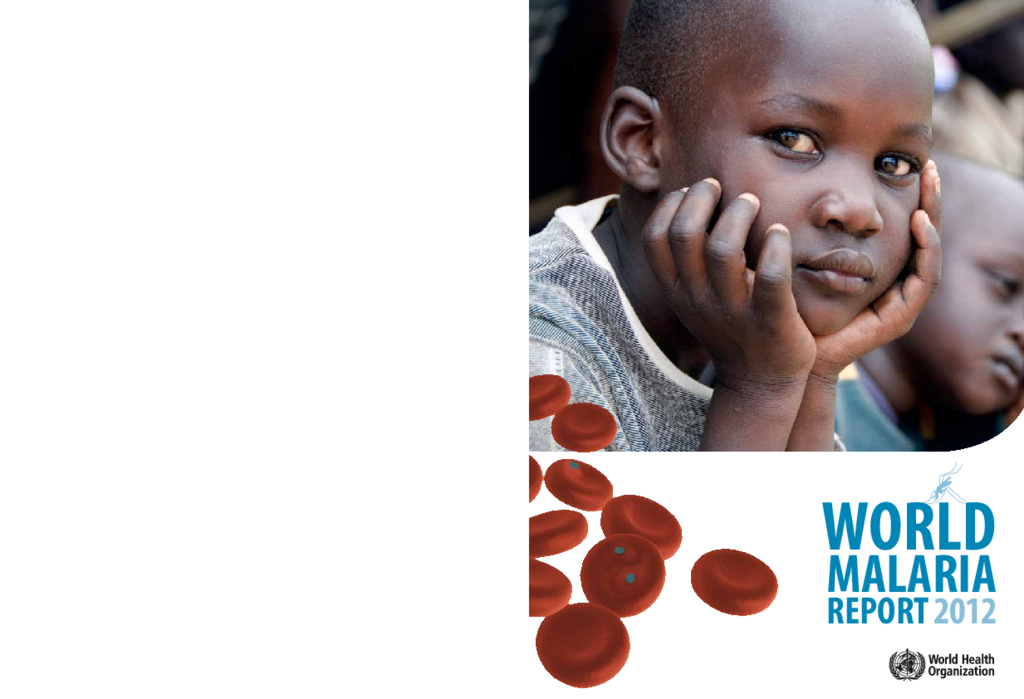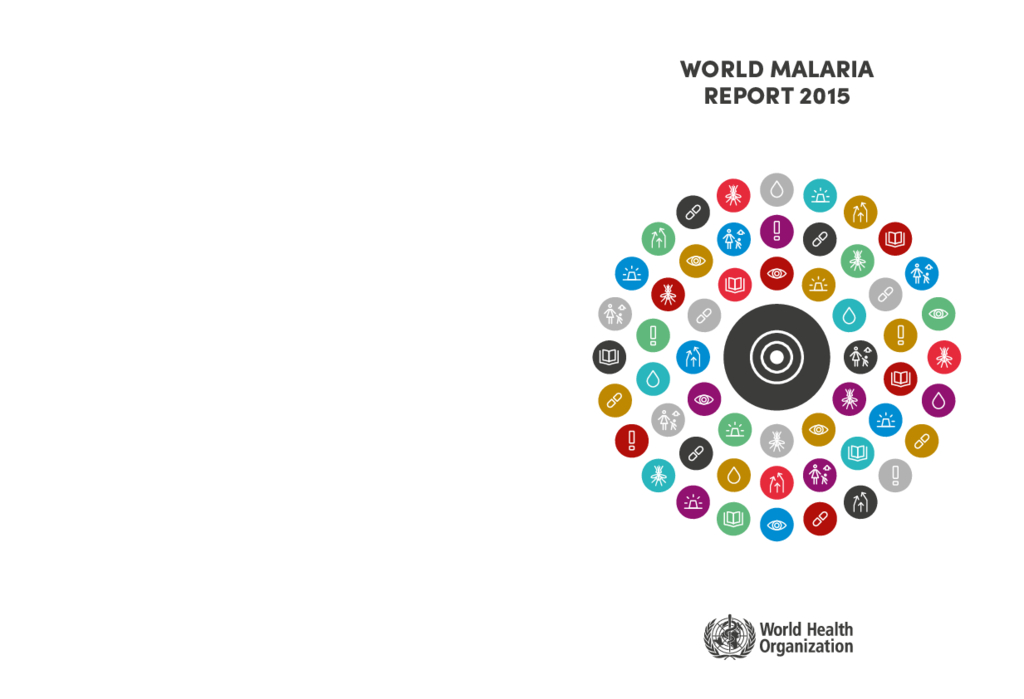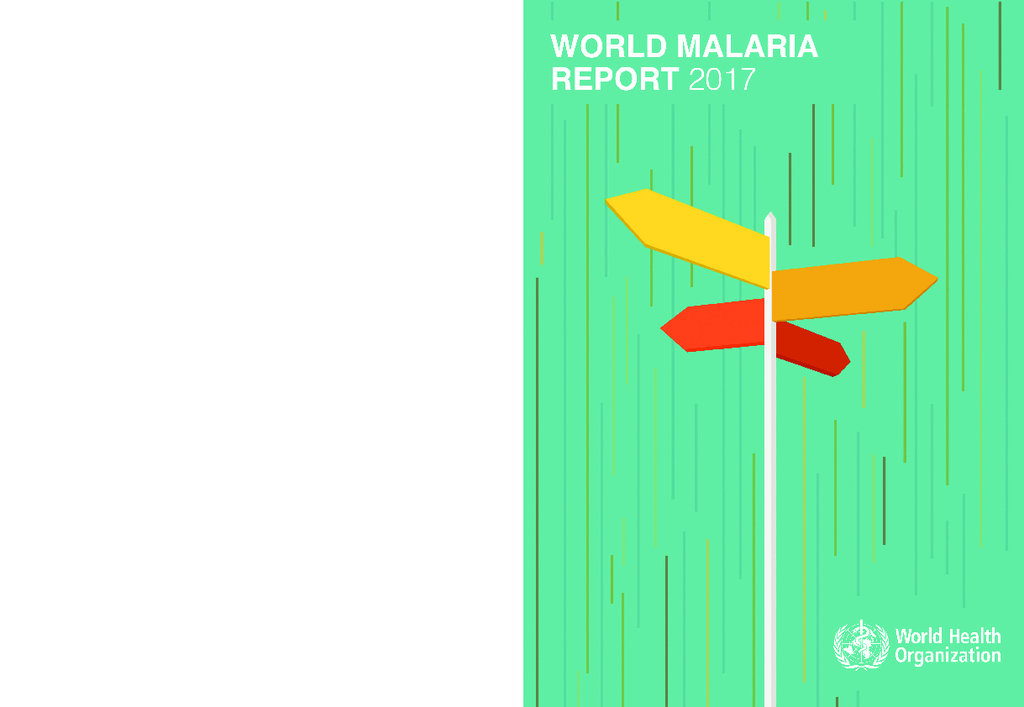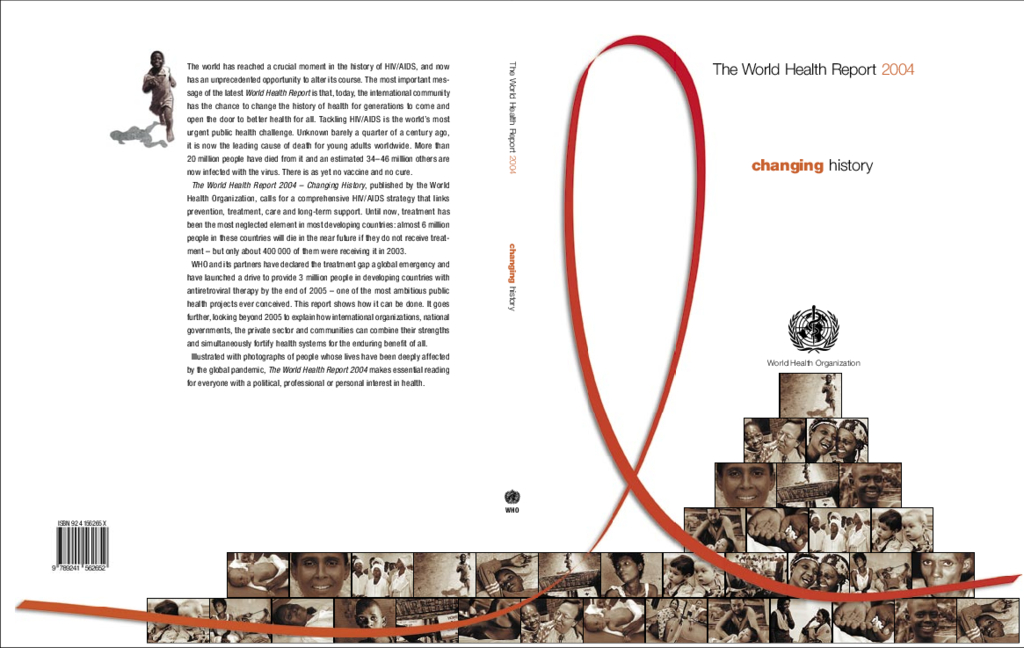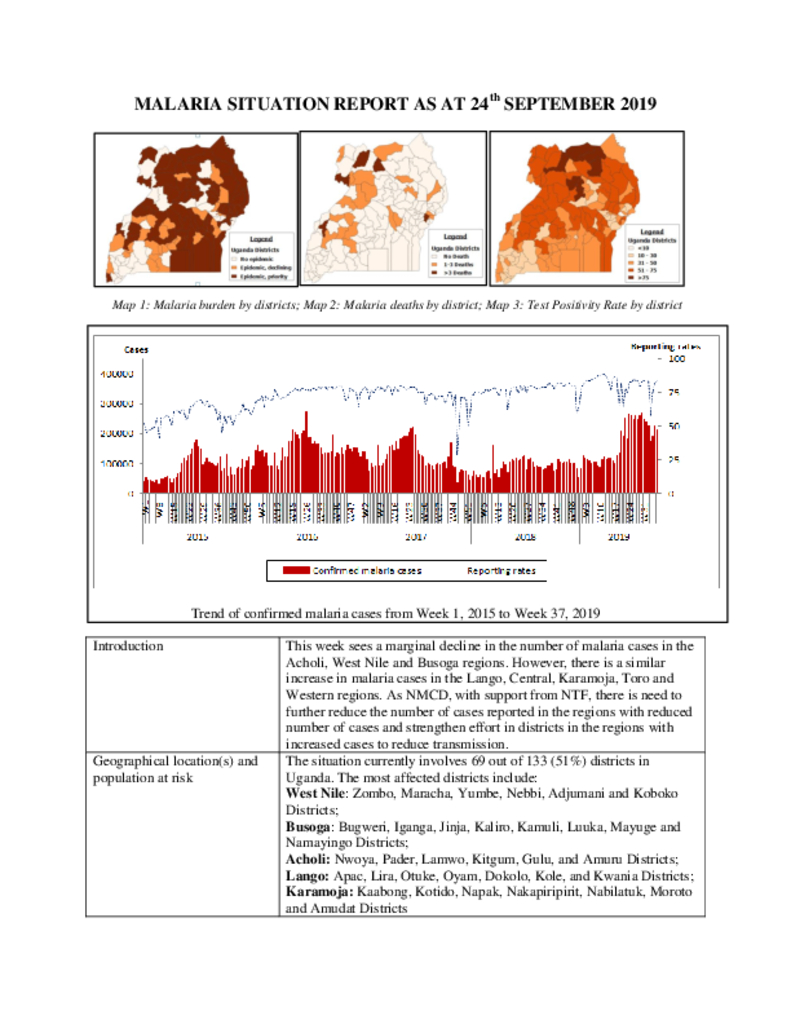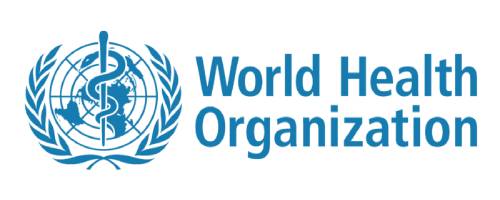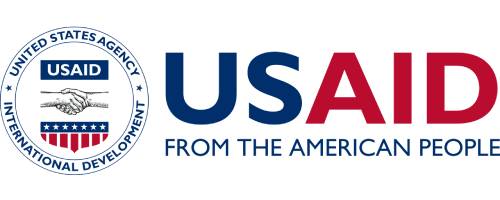This TB and Leprosy Management Desk Guide is produced by the Ministry of Health National Tuberculosis and Leprosy Programme based on current Tuberculosis and Leprosy guidelines and field implementation experiences. The flip chart is intended to support the roll out of updated guidelines and serve as a reference guide for health workers on the management and control of TB and Leprosy at both facility and community level. It has been simplified for easy understanding by the frontline health workers to offer client centred TB and Leprosy services.
The evaluation targeted patients seen at Health Center IV (HCIV), General Hospitals, Regional and National Referral hospitals from the twelve health regions of MoH. A total of 158 health facilities were sampled for the evaluation, of which 116 were Health Center IVs, 22 were General Hospitals, 14 were Regional Referral Hospitals and 6 were National Referral Clinics. In each of the visited health facilities, records of TB and HIV patients for the two-time periods of July 01, 2012- June 30, 2013 and July 01, 2015-June 30, 2016 were abstracted
The survey established that DS-TB patients spent on average 369 United States dollars (USD) on TB related care per episode while MDR-TB patients spend on average 3722 USD. In the prediagnosis period, major cost drivers for both types of TB were medical and travel costs with both costs being higher for MDR-TB than DS-TB. In post diagnosis period, the major cost drivers for MDR-TB were nutritional supplements, travel and food while for DS-TB patients in the same period the main cost drivers were nutritional supplements
Health workers are central to improving health system performance. According to the Annual Health Sector Performance Report (2016) public sector health facility staffing was 71% and PNFP staffing was 73%. The health workers in the PNFP sector are mainly comprised of support or para-clinical staff. Staffing is generally skewed towards the high referral level
In April 2018 a historic partnership of governments, civil society, the private sector and multilateral organisations, came together in London for a momentous Malaria Summit, delivering US $4.1 billion investment for the global malaria fight. Two days later at the Commonwealth Heads of Government Meeting (CHOGM), all 53 leaders committed to halve malaria in the Commonwealth within five years. If we keep our promises, implement the strategies, deliver the financing and political leadership promised at the summit, 2018 will prove to be a defining moment in humanity’s battle against this deadly disease. Keeping these promises will prevent 350 million cases of malaria and save 650,000 lives in Commonwealth countries.i
Confirmed Malaria cases per 1000: (Number of Malaria cases positive by microscopy and RDT/ district population )x 1000 Total Malaria cases per 1000. (Number of Confirmed + Presumed malaria cases) / district population)*1000 Malaria Deaths: Number of Malaria deaths per week % of Test Negative Treated: Proportion of those who tested negative that are treated. Test Positivity rate– Number of malaria positive tests (RDT + Microscopy) / Number tested by RDT and Microscopy ACT Stock available: Overall ACT stock available at district level compared expected weekly total malaria cases. RDT Stock available: Overall RDT stock available at district level compared to expected weekly suspected fevers. Proportion of Health facilities reporting ACT stock outs: Number of Health facilities with ACT stock out/ Number of facilities reporting
The World Malaria Report 2012 summarizes information received from 104 malaria-endemic countries and other sources, and updates the analyses presented in the 2011 report. It highlights the progress made towards the global malaria targets set for 2015 and describes current challenges for global malaria control and elimination.
The World malaria report 2015 assesses global malaria disease trends and changes in the coverage and fi nancing of malaria control programmes between 2000 and 2015. It also summarizes progress towards international targets, and provides regional and country profi les that summarize trends in each WHO region and each country with malaria
The World malaria report aims to track achievements towards the primary GTS goals on malaria morbidity, mortality and attainment of elimination, as presented in Table 1.1. To better contextualize the progress towards these goals, the report also tracks the total funding for malaria control and elimination, and for malaria research; the supply of key commodities to endemic countries (Section 2) and the associated population level coverage (Sections 3 and 4).
The Uganda Annual World Malaria Day scientific conference hosted by ministry of health draws malaria stakeholders in medicine, global health professionals representing academia, non-profits NGOs, industry, military Development and Implementation partners and private practice services. The meeting is designed for malaria stakeholders to share information and study findings. It is therefore our duty to understand the evidence presented in this one day scientific conference to direct our planning and policy directions.
The World Health Report 2004 shows how projects like this can bring the medical treatment that saved Joseph Jeune to millions of other people in poor and middle-income countries and how, crucially, such efforts can drive improvements in health systems. Effectively tackling HIV/AIDS is the world’s most urgent public health challenge. Already, the disease has killed more than 20 million people. Today, an estimated 34–46 million others are living with HIV/AIDS. In 2003, 3 million people died and 5 million others became infected. Unknown a quarter of a century ago, HIV/AIDS is now the leading caus
This week sees a marginal decline in the number of malaria cases in the Acholi, West Nile and Busoga regions. However, there is a similar increase in malaria cases in the Lango, Central, Karamoja, Toro and Western regions. As NMCD, with support from NTF, there is need to further reduce the number of cases reported in the regions with reduced number of cases and strengthen effort in districts in the regions with increased cases to reduce transmission
